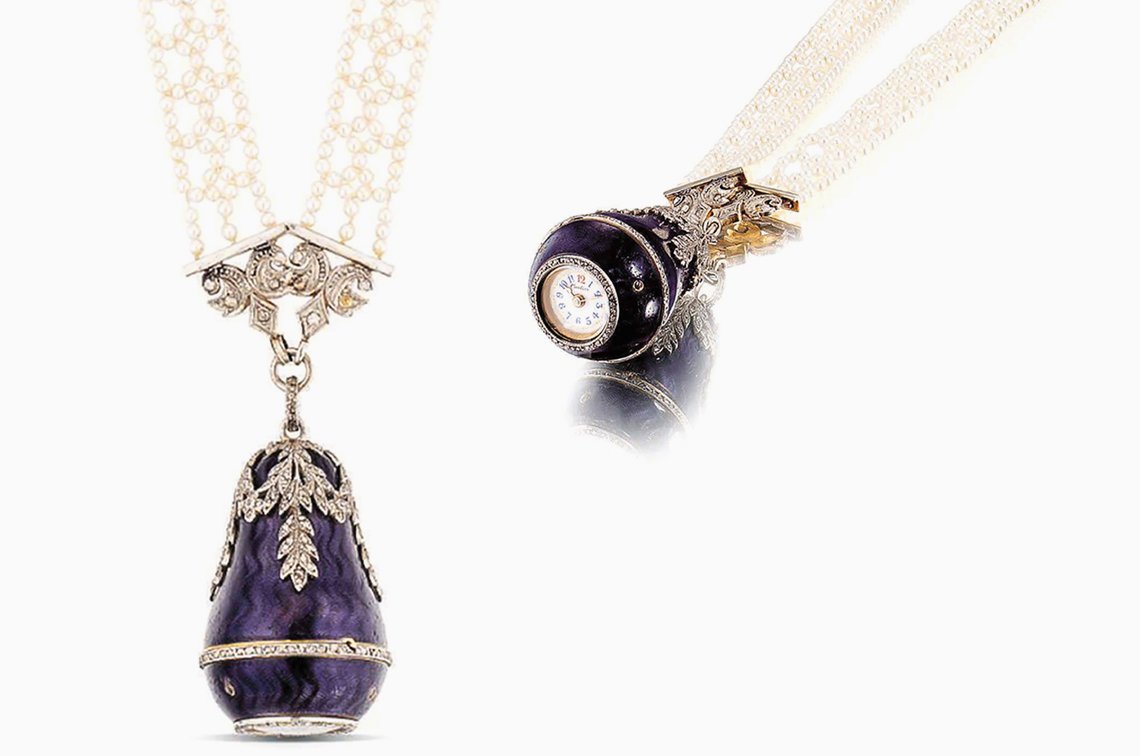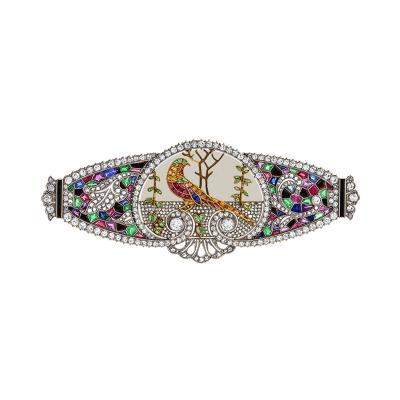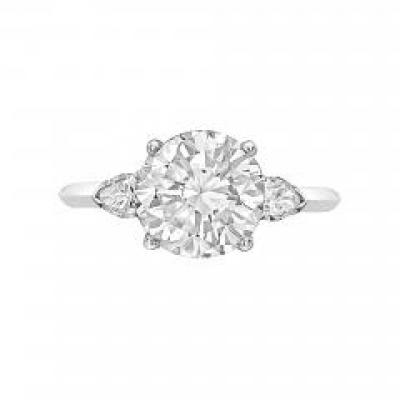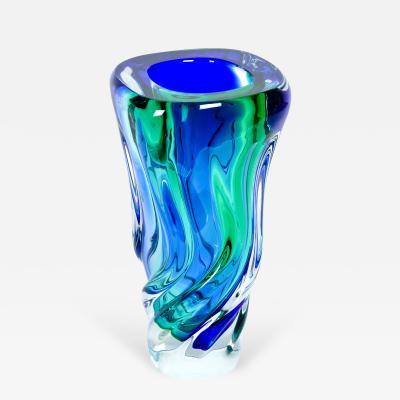Cartier’s Iconic Designs from the Belle Époque to the Post-War Era
Between 1900 and 1950, the Cartier family produced the firm’s most iconic designs through the use of state-of-the-art techniques in enameling, stone setting, and timepiece production. With international branches and the use of regionally specialized workshops, Louis Francois Cartier, and his three sons, Alfred, Pierre, and Jacque, innovated the jewelry design process, becoming “Jeweler to the Kings and Kings of the jewelers.” 1
The firm first originated in 1847 when Louis-Francois Cartier (1819–1904) took over the Paris-based business of his employer Adolphe Piccard. Louis expanded the business and opened his own shop at 9 Boulevard Des Italiens, Paris, in 1859 retailing jewelry and objects d’art from various manufacturers for the next fifty years. In 1874, Louis-Francois’s son, Alfred (1841–1925), took over the management of the Parisian shop and was able to grow the firm further by gaining additional prestigious suppliers such as Fossin, Froment-Meurice, Gueyton, Falize & Boucheron. The need to satisfy his clients’ requests to repair and improve jewelry purchased from him is believed to have directed Alfred toward designing and manufacturing his own creations. Soon after, Louis and Alfred became partners, relocating to 13 Rue de la Paix in 1899, in the heart of the jewelry and couturier quarter of Paris. This remains the firm’s flagship premises.
During this time frame, Alfred and his father, Louis were supplying many of the leading families of Europe and, in 1902, the Cartier firm was appointed royal jeweler for King Edward VII’s coronation. With increased orders placed from this landmark event and new prestige for the Cartier designs, Louis asked his second son, Pierre (1865–1965) to establish a London branch located at 175-6 Bond Street. Once established, Louis then asked his youngest son, Jacque (1884-1942) to take over as permanent director in 1906. As Jacque moved to London permanently to oversee the Cartier expansion into London, Pierre set his focus on the American market and moved to New York to begin the establishment of the American branch.
 |
Fig. 1: A Cartier platinum, diamond set, and “zig- zag” Russian ray enamel guilloche Pear Bell-form shaped pendant watch with neoclassical diamond millegrain fern sprays, circa 1910. Ye Olde Timekeepers,Inc., New York. |
Cartier & the Competition for the Imperial Russian Court
As the Cartier branches were beginning to place more orders worldwide, Pierre Cartier realized his client’s growing fascination with enamel and hardstone carving creations. At this time, Gustav Fabergé, a trained goldsmith working in Russia, was producing the most refined enamel creations of the day by using a process that remained a closely guarded secret within his regional workshops in St. Petersburg & Moscow. As a result, Pierre Cartier made several trips to Russia in 1904 and 1905 to buy enamel and hardstone carvings and generate relationships with local workshops such as the Yahr workshop, which also possessed the secret enameling technologies and methods deployed by Fabergé. Through the use of these regional workshops, Pierre Cartier developed a means to compete with Fabergé.
Cartier’s Russian jewelry was in deeper color hues than before and designed with guilloche enameling called “Russian Rays” (Fig. 1). The name was derived from a central radiating design that evolved into zig-zag enameling, which distinguished it from Fabergé’s guilloche enamelin. Eventually, as Cartier mastered its own enameling techniques, Pierre Cartier procured a royal warrant as the “Royal Jeweler to the Imperial Russian Court.” He was unable to open an official Russian branch, however, since Faberge’s regional social & political influence proved to be too strong for Cartier to maintain a presence in that region, adding to the allure and rarity of Russian market Cartier pieces.
 | |
Left: Fig. 3: An Art Deco platinum and diamond set brooch, with ruby designed as cherry blossoms. attributed to the Henri Picq workshop for Cartier, circa 1920. Ye Olde Timekeepers, Inc., New York. Center: Fig. 4: An Art Deco Tutti Frutti Cartier bracelet attributed to the Henri Picq workshop and designed as a row of articulated diamond branches set with carved ruby, sapphire, and emerald leaves, ca. 1928. Price realized $1,779,200US, October 2017. Image courtesy of Sotheby’s, Hong Kong. Right: Fig. 2: An art deco bracelet watch, Henri Picq workshop for Audemars Piguet; hand-stamped with Cartier serial numbers. Designed as a row of articulated diamond branches set with buff-top ruby cut stones and sapphires as berries to produce a flower and vine motif. Ye Olde Timekeepers, Inc., New York. |
The Picq Workshop and the “Tutti Frutti” Flower & Vine “Tree of Life” Motif, circa 1915–1930
Pierre recognized the need to innovate by adding different workshops to the Cartier brand, and, with his brothers, decided to establish workshops that would focus on particular creations and design innovations. One of these was the Henri Picq workshop in Paris, one of the most celebrated ateliers of their day. Henri Picq was recognized for introducing a process that produced a brighter platinum and allowed for heavy set stones to be used in more delicate settings. The workshop’s innovations led to some of Cartier and Henri Picq’s most iconic designs, its Flower and Vine (Fig. 2) and its highly sought after Tutti Frutti motif with carved stones (Figs. 3, 4). Such innovation allowed Cartier to once again separate themselves from their competition.
Cartier in the 1940s: The Tank and The Helm
Two World Wars left Europe in shambles and forever changed society norms and styles. A new sense of masculinity stemmed from the military, which Louis Cartier and the Cartier firm recognized. Seeking to meet the needs of its clients’ changed attitudes and maintain their own place in an ever-changing world, Cartier drew on the image of the French-made Renault ft-17 tank that saw action on the Western Front during World War I. Louis Cartier first designed the original “Tank” watch in 1917 as a gift for his friend General John “Black Jack” Pershing, commander of the American Expeditionary Forces on the Western Front. The case design was first offered to the public in 1919 and is one of the most iconic Cartier designs ever produced (Fig. 5). The Tank wristwatch was such a success for the firm that the Cartier’s decided to create different Tank case design concepts that could be collected. The Super Tank, Tank American, Tank Cintree, Chinois Tank, were among the many cases designed to represent the mutually reciprocal relationship the Cartiers had with the world for which they were designing.
 |
Left: Fig. 7: A rare 1946 Helm with ‘Vendome’ bracelet watch made by European Watch Company for Cartier. 18kt gold, platinum, diamond. Price realized: $62,500CHF, May 2014. Image courtesy Christies, Geneva. Center: Fig. 6: A rare 1940s Jaeger LeCoultre for Cartier Paris Helm in 18kt yellow gold with flared lugs. Ye Olde Timekeepers, Inc. New York. Right: Fig. 5: A rare 1962 Cartier Tank belonging to Jacqueline Kennedy Onassis. Price realized: $379,500US, June 2017. Image courtesy Christies, New York. |
Similar to the Tank wristwatch that was designed to mimic the shape and lines of an actual tank, the “Helm” wristwatch case design concept was designed to mimic a ship’s wheel (Fig. 6). This design concept is less known due to its significantly lower production in the 1940s. As one of the first of Cartier’s round wristwatch designs, the Helm case design impacted Cartier timepieces for years to come by setting the foundation for Cartier’s first round, mass-produced wristwatch concept, “The Gouvernail” wristwatch case design (Fig. 7). Drawing inspiration from the Helm, The Gouvernail case design was similarly styled to display a transparent dial in a round shaped case just as exhibited by the Helm. Eventually this reference would become one of Cartier’s most popular mass-produced round case designed wristwatches when it was offered in the 1950s.
Cartier in the 1950s: Concealed Bracelet Watches
Similar to the shift in societal attitudes and styles towards masculinity that had given birth to the concept of the Tank and the Helm, a new sense of women’s empowerment was now also being recognized by the firm and the concept of the concealed bracelet watch was born; this was a time when it was considered rude to check the time in the company of others.
 |
Fig. 8: A 1950s platinum diamond-set concealed “Spray” motif bracelet watch, Blancpain for Cartier. YE Olde Timekeepers, Inc. New York. |
Now, instead of obstacles resulting from the enameling process or stone setting, Cartier had his newest challenge: How do you insert a watch movement into a bracelet? To answer that question, the firm initiated new business relationships with timepiece workshops that could supply Cartier with timepiece movements their bracelet designs needed (Fig. 8). Depending on the design and region of the world, watch mechanisms were commissioned from Swiss watch manufacturers worldwide. Jaeger LeCoultre, European Watch Company, Blancpain, Audemars Piguet, Patek Philippe, and Vacheron Constantin all supplied Cartier with watches. The demand for the concealed bracelet watch sparked increased competition among the timepiece manufacturing firms to produce the smallest types of movements needed for Cartier bracelet watches.
Post-World War II: The Flora Motif
In the aftermath of the turmoil of World War II, there was a search for a new sense of comfort as people recovered from the devastations of the war. Flowers became the imagery to which people frequently turned. The Cartier firm recognized this social and cultural reaction to the war and began to produce flora motif pieces in place of their carved fruit designs, such as their Tutti Frutti pieces, which had resonated with wealthy society members in the Roaring Twenties. The post-World War II flora motifs are among the rarest due to their extremely limited production and because they are the last of the creations directly produced by a living Cartier descendant (Fig. 9). The flora motif designs stand out due to their extreme likeness to real flowers in their three-dimensional designs and sizes (Fig. 10) and as they were commissioned for Cartier’s most exclusive clients of the time and designed only in platinum.
 |
Left: Fig. 9: Cartier interchangeable double clip & brooch designed in platinum with yellow diamond, circa 1940-50s. Made at the London Workshop. Approximately 14 carat yellow diamonds. Ye Olde Timekeepers, Inc., New York. Right: Fig. 10: A very rare Cartier 1940s platinum, diamond & cushion-shaped ruby brooch designed as a Flora design with 7.43 carats Ruby. Price realized $1,066,770US, November 2018. Image courtesy Sotheby’s, Geneva. |
At the conclusion of the war, there was only one surviving Cartier brother, Pierre, to lead the firm into the new era. From this point on, the Cartier family no longer had direct involvement with design. In addition, platinum practically vanished from circulation in this period, leading the Cartier firm to abandon objects made in platinum. There are only a very few examples of platinum Cartier pieces from this era, with exceptions being made only for orders placed by special clients, such as the Duchess of Windsor, Grace Kelly, Barbara Hutton and Elizabeth Taylor.
Jason Blake Nichinson is an art historian from UCLA and curator specializing in gemstone timepieces & jewelry from 1890 –1970 for Ye Olde Timekeepers, Inc. ( yeoldetimekeepers.com).
This article was originally published in the 2019 Anniversary/Spring issue of Antiques & Fine Art magazine, a fully digitized version of which is available at www.afamag.com.
1. Judy Rudeo. Cartier: 1900–1939 (New York: Harry N. Abrams, 1999).































